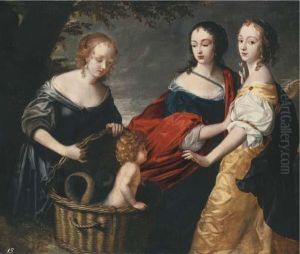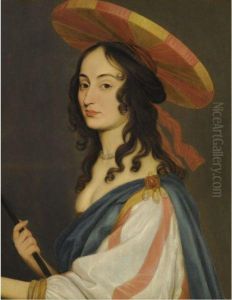Luise, Princess Hollandine Paintings
Luise Hollandine of the Palatinate, also known as Princess Luise Hollandine, was not primarily known as a professional artist, but rather as a noblewoman who was skilled in the arts, particularly painting. Born on April 18, 1622, in The Hague, Netherlands, she was the daughter of Frederick V, Elector Palatine, and Elizabeth Stuart, and thus was a princess of the Palatinate and a member of the House of Wittelsbach. Her life was marked by the political turmoil and religious conflicts of her time, including her family's involvement in the Thirty Years' War, which profoundly affected the trajectory of her life.
Despite the political upheavals that her family faced, Luise Hollandine was recognized for her artistic talents, particularly in portraiture and landscapes. She was a contemporary of other notable artists of the 17th century and was known for her strong, individualistic style. However, her artistic work often took a backseat to the royal duties and the complexities of her personal life.
In a surprising turn of events for a woman of her standing, Luise Hollandine chose to convert to Catholicism in 1657, which was a significant move given her Protestant upbringing and the religious tensions of the time. Following her conversion, she fled to France where she found refuge in a convent, the Abbey of Maubuisson, eventually taking vows as an abbess in 1664. This marked a dramatic shift in her life from a princess engaged in the secular world to a religious figure dedicated to her faith.
Throughout her life in the convent, Luise Hollandine continued to paint, but her work from this period was primarily for private devotion and is less well-documented than her earlier pieces. She passed away on February 11, 1709, in the Abbey of Maubuisson. While she is not as widely known as other artists of her time, the surviving works attributed to her provide insight into her skill as an artist and her unique perspective as a noblewoman and an abbess of the 17th century.

